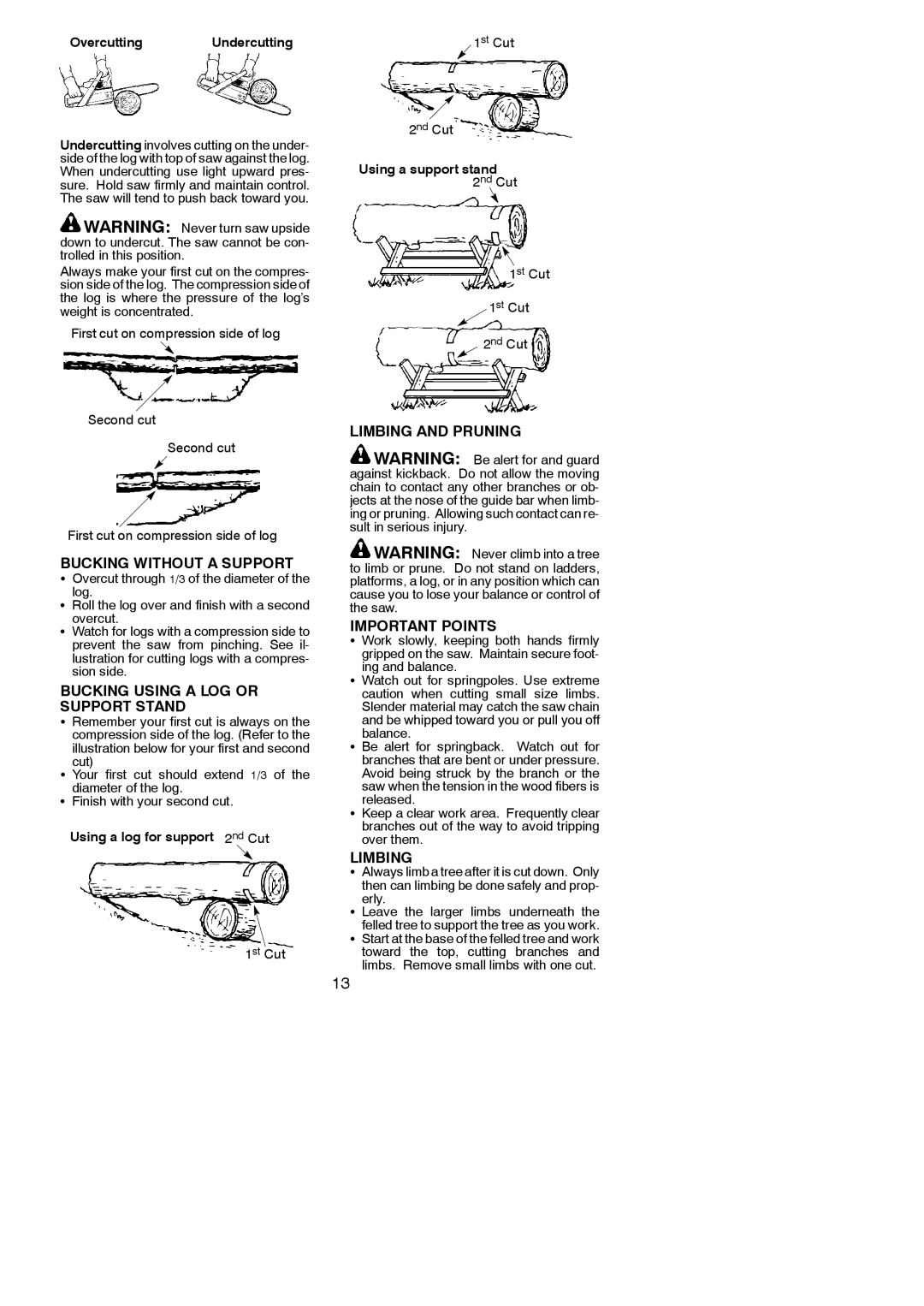115358026, 966558001 specifications
The Poulan 966558001 and 115358026 are two prominent models in the realm of outdoor power equipment, particularly favored for their efficiency and reliability in lawn care and maintenance tasks. Poulan, a brand known for delivering robust and user-friendly tools, has integrated several features and technologies into these models that enhance their performance and usability.One of the standout features of the Poulan 966558001 is its powerful engine. Designed to deliver consistent performance, the engine provides ample power for cutting through thick grass and tackling difficult terrains. Coupled with a dependable fuel system, this model ensures a prolonged operation without the need for frequent refueling, making it ideal for large lawns and extensive areas.
In contrast, the Poulan 115358026 focuses on lightweight mobility without sacrificing power. Its design is tailored for easy handling, allowing users to navigate tight spaces and maneuver around obstacles effortlessly. This model is particularly suited for homeowners who require a reliable tool for smaller yards or intricate landscaping tasks.
Both models incorporate advanced technologies that enhance their cutting capabilities. An efficient blade system is a hallmark of the Poulan brand, and these models feature sharp, durable blades that provide clean cuts to promote healthier grass growth. Additionally, the adjustable cutting height found in both models allows users to customize their mowing experience according to their lawn's needs, providing versatility for varying grass lengths.
User comfort is another priority reflected in the ergonomic designs of both the 966558001 and 115358026. Equipped with comfortable grips, these mowers reduce strain during extended use, making lawn care less of a chore. Furthermore, the vibration-reducing technology helps to minimize fatigue, ensuring that users can operate the machines for longer periods without discomfort.
Finally, maintenance is made straightforward with both Poulan models. Easy access to key components simplifies cleaning and upkeep, allowing users to maintain their equipment in optimal condition for extended lifespans.
In summary, the Poulan 966558001 and 115358026 exemplify the brand’s commitment to quality and innovation. With their powerful engines, intelligent design, and user-friendly features, these models stand out as reliable choices for effective lawn care, catering to the needs of both casual homeowners and dedicated gardening enthusiasts.

